Editor’s note: This post is part of our weekly In the NVIDIA Studio series, which celebrates featured artists, offers creative tips and tricks, and demonstrates how NVIDIA Studio technology improves creative workflows. In the coming weeks, we’ll be deep diving on new GeForce RTX 40 Series GPU features, technologies and resources, and how they dramatically accelerate content creation.
This week In the NVIDIA Studio, we’re highlighting 3D and motion graphics artist SouthernShotty — and scenes from his soon-to-be released short film, Watermelon Girl.
“The theme of the film is that it’s more rewarding to give to others than to receive yourself,” said the artist. Watermelon Girl aims to create joy and invoke youth, he said, inspiring artists and viewers to raise each other’s spirits and be a positive force in the world.
“I really hope it encourages people to reach out and help each other through hard times,” SouthernShotty said.
SouthernShotty learned to model in 3D as a faster alternative to his favorite childhood art form, claymation.
“Growing up, I did a lot of arts and crafts with my mom and dad, so I loved creating little worlds,” he said.
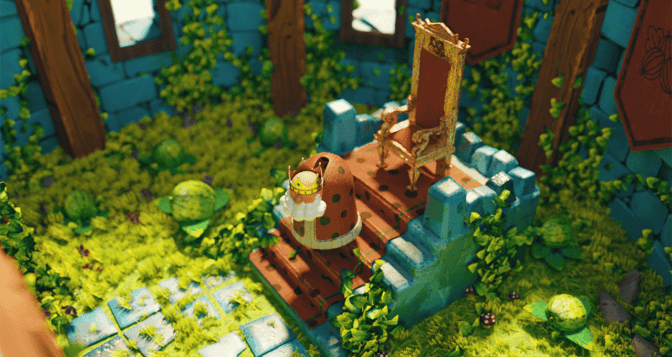
SouthernShotty brainstormed characters using the mood board app Milanote, which allows users to drag and reposition cards to organize out-of-order thoughts. He also experimented with AI image generators to develop ideas and create reference material for his own artwork.
Once his vision was set, SouthernShotty began creating characters and scenes in Blender. Using an NVIDIA Studio laptop housing a GeForce RTX 3080 GPU, he deployed Blender’s Cycles renderer with RTX-accelerated OptiX ray tracing in the viewport, unlocking interactive photorealistic rendering for modeling.
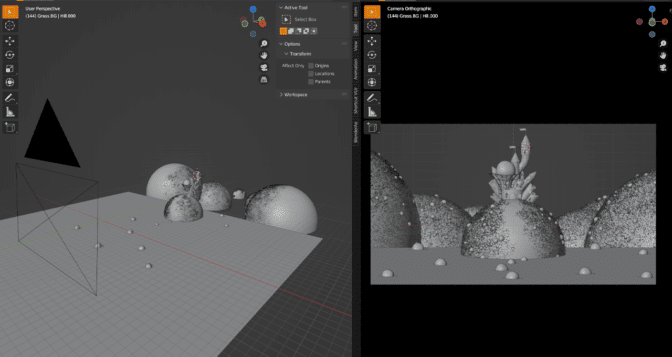
To make volume rendering more GPU memory-efficient, SouthernShotty took advantage of the baked-in NVIDIA NanoVBD technology, allowing him to quickly adjust large and complex scenes with smooth interactivity. He then added animations to his characters and scenes before exporting renders in lightning speed using Blender Cycles.
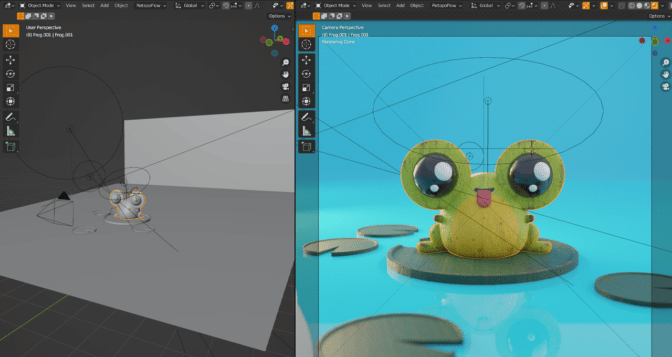
Next the artist moved into Substance 3D Painter to build textures characteristic of his custom look, which, he said, is “a tactile vibe that conveys an interesting mix of unconventional materials.”
NVIDIA Iray technology and the RTX GPU played a critical role, with RTX-accelerated light and ambient occlusion baking photorealistic textures in mere seconds.
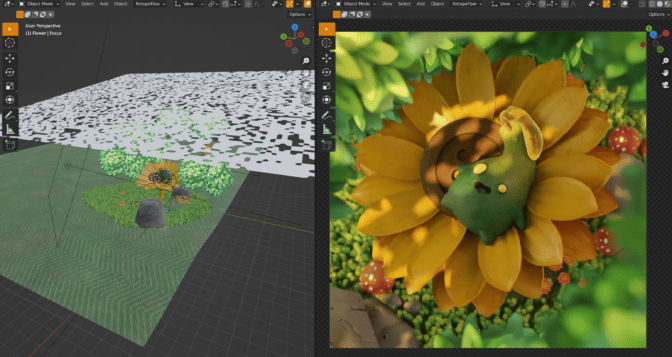
SouthernShotty then imported renders in Substance 3D Stager to apply textures and experiment with colors. Substance 3D Stager’s latest update added support for SBSAR to enable faster exports and custom textures that are easy to plug and play, along with new options to apply blending modes and opacity.
Preset lighting options helped him light the scene with ease. With RTX-accelerated denoising, SouthernShotty could tweak and tinker the scene in a highly interactive viewport with virtually no slowdown — allowing him to focus on creating without the waiting.
He quickly exported final passes in Blender before reaching the composition stage, where he applied various GPU-accelerated effects in Adobe Photoshop, After Effects, Illustrator and Premiere Pro.
“GeForce RTX GPUs revolutionized the way I work. I no longer spend hours optimizing my scenes, waiting on preview renders, or packaging files for an expensive online render farm,” SouthernShotty said.
As SouthernShotty continues to refine Watermelon Girl, he’ll now have the powerful GeForce RTX 4090 at his disposal. The same GPU that TechRadar said “is more powerful than we even thought possible.”
When it’s time to export the final film, the RTX 40 Series NVIDIA dual AV1 encoders via the popular Voukoder plugin for Adobe Premiere Pro will see him instantly slash his export times and reduce his file size.
SouthernShotty recently tested the GeForce RTX 4090 GPU to see if it’s the best card for Blender and 3D.
Watch below.
In testing, render speeds in Blender are 70% faster than the previous generation.

Check out SouthernShotty’s linktree for Blender tutorials, social media links and more.
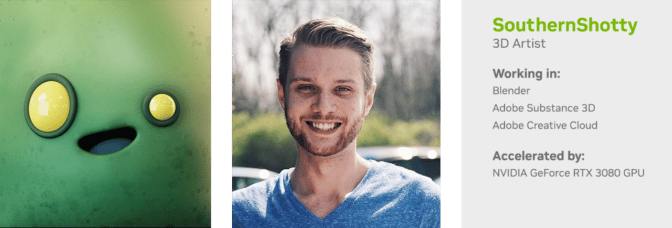
Join the #From2Dto3D Challenge
NVIDIA Studio wants to see your 2D to 3D progress.
Join the #From2Dto3D challenge this month for a chance to be featured on NVIDIA Studio’s social media channels, like @Rik_Vasquez:
@NVIDIAStudio Fan art from 2017, Cyborg – Teen Titan's Go! edition (fun cartoon series).#From2Dto3D pic.twitter.com/5PIw57FxcL
— Rik 🐳 (@Rik_Vasquez) October 5, 2022
Entering is easy: Simply post a piece of 2D art next to a corresponding 3D rendition on Instagram, Twitter or Facebook — and be sure to tag #From2Dto3D.
